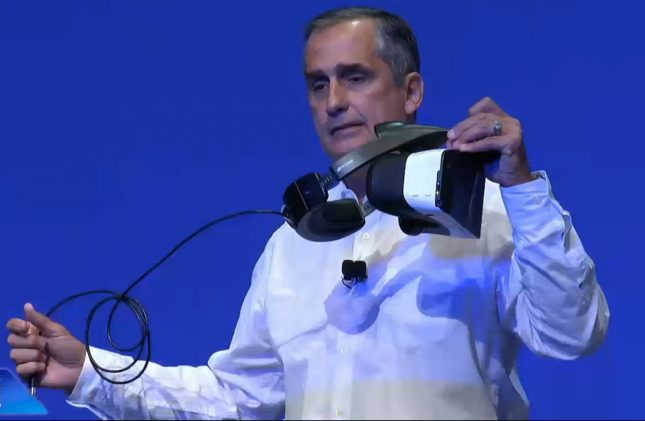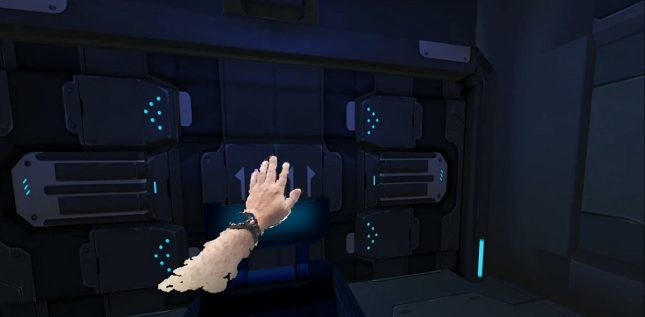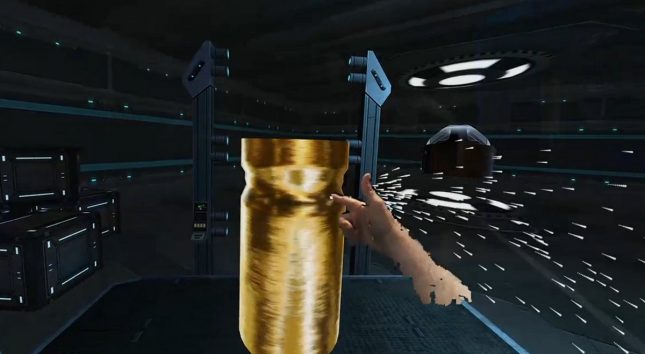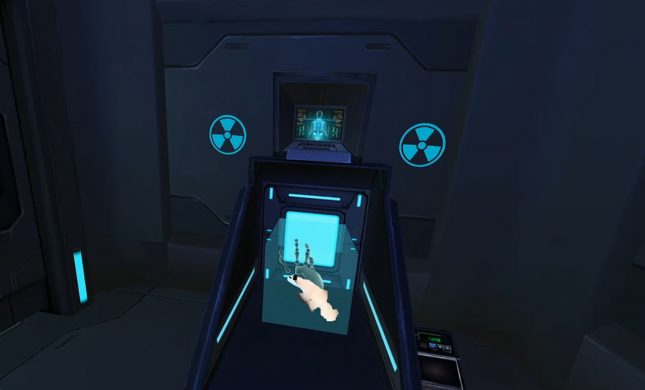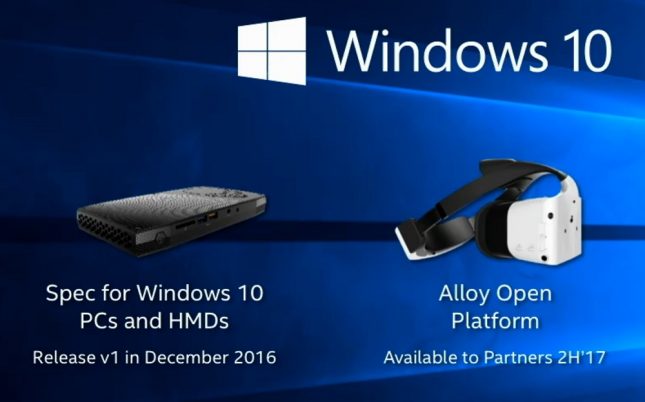Project Alloy – Intel Merged Reality HMD For 1st Gen VR
Intel Chief Executive Brian Krzanich today announced that chip maker giant has been working on their own Virtual Reality headset. Intel’s 1st Gen VR project is known as Project Alloy and it consists of an all-in-one virtual reality headset that allows you to enjoy VR untethered despite all the units at the show having a cable on them.
Mr. KKrzanic said that the Project Alloy head mounted display (HMD) has compute, graphics, batteries, cameras and sensors all built-in, so it is a self-contained unit that doesn’t need to be plugged in for normal use. You dont need to connect it to a computer, but it appears you’ll need to plug it in for charging or to connect it to a big screen. Intel Project Alloy uses RealSense cameras to ‘see’ the environment so that you wont run into anything thanks to a ‘merged reality’ experience.
Current VR headsets such as the Oculus Rift and HTC Vive require you to connect the headset to a PC that renders the graphics, so Intel Project Alloy differs by having everything worn on the head. This will of course cause the unit to be larger, but we all now that VR users don’t want to be cabled to a PC. Since you have no cables to drag around it means that you can more easily move around an environment. Moving from room to room in what Intel calls room to room tracking. You can also see your hands inside the virtual world with this merged reality solution. The images above show how you can ‘pull’ a lever in the VR world or cut something down on a lathe with just your fingers. Windows Holographic for the win right?
The first version of the Intel Project Alloy Spec will be released in December 2016 and the open platform will be available to partners sometime in the second half of 2017. Since Intel is going to open source the Project Alloy hardware it means anyone can take this general design for an HMD and release a product that works with Windows Holographic.
Looks like we’ll have to wait for merged reality for a bit, but is this just another nail in the coffin for the PC? It looks like Intel is continuing to move away with the traditional desktop PC and is focusing on IoT, VR and datacenter solutions.

